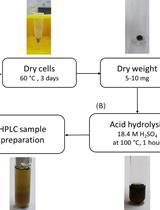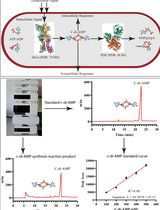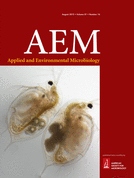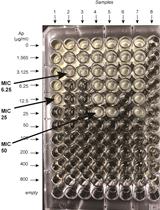- EN - English
- CN - 中文
Rust Removal Experiments
除锈实验
发布: 2016年04月05日第6卷第7期 DOI: 10.21769/BioProtoc.1776 浏览次数: 23760
评审: Valentine V TrotterModesto Redrejo-RodriguezAnonymous reviewer(s)

相关实验方案

酸水解-高效液相色谱法测定集胞藻PCC 6803中聚3-羟基丁酸酯的含量
Janine Kaewbai-ngam [...] Tanakarn Monshupanee
2023年08月20日 1199 阅读

基于高效液相色谱法的史氏分枝杆菌DisA环二腺苷酸(C-di-AMP)合成酶活性研究
Avisek Mahapa [...] Dipankar Chatterji
2024年12月20日 994 阅读
Abstract
Iron oxidation, known as rust formation, causes enormous loss in term of property damages and associated economic risks. Depending on the degree of formation, rust consists of several layers of iron in different oxidation states. The brownish top layer is mostly iron (III) oxide-hydroxide [FeO(OH), Fe(OH)3] while the deepest black layers possess iron oxide (Fe2O3.nH2O). The flaky nature of surface rust meditates diffusion of oxygen and water to inner material sections which can lead to total disintegration of iron mass. As a result, it is desirable to remove rust and protect fresh surface from oxidizers. The common rust removal reagents are mainly based on complex formation of ferric ion with organic and inorganic acids such as citric acid, oxalic acid, and phosphoric acid. Rust removal ability is typically a qualitative observation which makes direct comparison between treatment options cumbersome if not impractical. In our recent work (Ahmadi et al., 2015), we have developed a colorimetric assay to measure ferric concentration in rust removal treatment media using a bacterially-produced siderophore (yersiniabactin) in comparison to a commercial rust removal reagent. In this approach, ferric concentration is correlated to the mass of rust being dissolved in the presence of different removal agents. This assay is based on a modification of the 1, 10-phenanthroline assay (Skoog and West, 1979) to enable detection using a 96-well plate format for higher throughput screening and assessment.
Materials and Reagents
- Rusted iron samples
- 1,10-phenanthroline (Sigma-Aldrich, catalog number: 131377 )
- Hydroxylamine hydrochloride (Sigma-Aldrich, catalog number: 159417 )
- Ammonium acetate (Sigma-Aldrich, catalog number: 09689 )
- Ammonium iron (II) sulfate hexahydrate (Sigma-Aldrich, catalog number: 09719 )
- Oxalic acid (Sigma-Aldrich, catalog number: 241172 )
- High pure water (Milli-Q)
- 0.3% 1,10-phenanthroline (wt/vol) (see Recipes)
- 1% Hydroxylamine hydrochloride (wt/vol) (see Recipes)
- 0.1 M Ammonium acetate (see Recipes)
- Ammonium iron (II) sulfate hexahydrate standard solution (see Recipes)
- 10% Oxalic acid (wt/vol) (see Recipes)
Equipment
- MaxQTM 4000 Benchtop Orbital Shakers (Thermo Fisher Scientific, catalog number: SHKA4000 )
- Biotek Synergy 4 microplate reader (http://www.biotek.com/resources/articles/hybrid-plate-reader.html)
- (Preferred) Milli-Q (Millipore) water purification system
- (Optional) Vertical Band Saw (for machine-generated iron samples)
Procedure
文章信息
版权信息
© 2016 The Authors; exclusive licensee Bio-protocol LLC.
如何引用
Ahmadi, M. K. and Pfeifer, B. A. (2016). Rust Removal Experiments. Bio-protocol 6(7): e1776. DOI: 10.21769/BioProtoc.1776.
分类
微生物学 > 微生物生物化学 > 其它化合物
您对这篇实验方法有问题吗?
在此处发布您的问题,我们将邀请本文作者来回答。同时,我们会将您的问题发布到Bio-protocol Exchange,以便寻求社区成员的帮助。
提问指南
+ 问题描述
写下详细的问题描述,包括所有有助于他人回答您问题的信息(例如实验过程、条件和相关图像等)。
Share
Bluesky
X
Copy link










